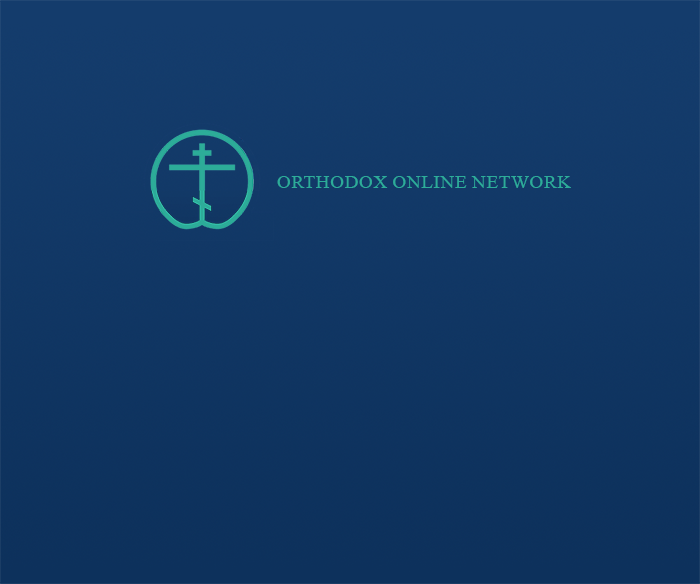Orthodoxy is defined by the preservation of the essential and inseparable relationship between the Bible and the liturgy, between divine revelation as the legal and normative source of our faith, and the celebration of this faith in the worship of the Church. Faith, founded in Scripture, determines the content of our worship, and worship provides the expression of our faith.
This principle, once again, is expressed in the Latin phrase “lex orandi lex est credendi,” which means that our law of worship does not differ from our law of faith. Our prayers are shaped and expressed by our theology, just as our theology is enlightened and deepened by our prayers.
In our liturgical services, we praise, bless, and revere the God from whom we receive saving grace and the gift of eternal life. Accordingly, we conclude our Eucharistic liturgy with a prayer behind the pulpit in the midst of the people, which begins thus: “O Lord, who bless those who bless you and sanctify those who trust in you, save your people and bless your inheritance and preserve the perfection of your Church...”
The most profound meaning of faith is fidelity, that is, complete and firm trust in God’s complete care for us. In response to our faithfulness, which we express through the worship by which we “bless” Him, God grants us additional blessings. Our relationship with Him involves a movement of reciprocity. Through worship we present ourselves to Him, and also through this same worship He presents Himself to us. We “bless” Him with our thanks, reverence, and praise, and we bless Him with the continuous flow of His divine grace.
This mutual gesture of self-giving culminates in the Divine Mass, when we offer to God the fruit of the earth that He had previously given to us: “May you have what you have…”. In return, we receive nourishment from His hand in the form of Communion, which actually qualifies us to participate in His life by participating in the body and blood of His glorified, risen Son. In the Eucharistic service, we experience the truth and fullness of the Gospel. Above all, we become aware of the vital bond, that is, of the actual unity, that exists between the Gospel and the liturgy, between what is written, that is, the legal source of faith, and the realization of this faith in the prayer of the Church.
This fundamental relationship between Scripture and liturgy is evident in the Bible. The Hebrew Bible, our Old Testament, is full of liturgical hymns, including the all-too-familiar Book of Psalms. In the intertestamental period arose a wealth of hymns that were combined with canonical and non-canonical writings, including the Song of Ezra and the Three Young Boys (i.e., Daniel in the Septuagint), the Prayer of Manasseh, the Hodayot or Book of Songs, the Sabbath hymns from Qumran, and the Psalms of Solomon from the first century.
In the New Testament, we find sections or parts of texts that were adopted in Christian hymns in the first centuries, such as the praises of Mary, Zechariah and Simon in the Apostle Luke’s accounts of the birth and childhood of Christ (Luke 1 and 2). The Apostle Paul refers to “psalms, hymns and spiritual songs,” which are difficult to define but clearly indicate liturgical elements familiar to Christians of the first period. Praise portions appear in passages such as 1 Corinthians 15:54-55, Ephesians 5:14, Hebrews 1:1-4, 1 Timothy 3:16, 1 Peter 2:22-24, and throughout the book of Revelation.
Confessional or faith praises appear in the well-known passages of Philippians 2:5-11 and Colossians 15:2-19. Some respected scholars of the book believe that the introduction to the Gospel of John (1:1-18) was adopted from a Christian (somewhat Gnostic) hymn from an early period. In any case, since the structure of these passages is according to the literary model known as chiasmus, it is difficult to say whether their rhythm is actually praiseworthy, meaning that their original form was sung in liturgical services (many scholars believe that Philippians 2, for example For example, it was sung in response in some Pauline groups), or this rhythm arises from the poetic balance resulting from concentric parallelism. In both cases, underlying these biblical passages are likely elements of communal worship in the early church, some of which are chanted and others, such as the Creed, are recited.
It is essential for us to recognize and preserve this strong relationship that exists between Church law and its liturgical tradition. What we confess with our lips in the form of declarations of faith, what we sing in the form of antiphons or prokemna (taken from the Psalms), the stichons (i.e. the Comforter and Vespers apostychons) and similar liturgical elements, all express the convictions deeply rooted in the heart. These firm convictions come directly from God’s revelation of Himself in the Holy Bible.
If other Christian denominations often find themselves in a state of crisis, this is largely because this vital link between Scripture and liturgy has been severed in their traditions throughout history. When this happens, the unavoidable result is the production of biblical studies that are little more than exercises in biblical criticism or literary analysis, and a devotional service that is practically devoid of genuine spiritual content. The logical result of this discontinuity between the Church’s book and its worship is phenomena such as the Jesus Seminar on the one hand, and the jazz Mass on the other. Any biblical interpretation that is not based on devotion will inevitably limit its interest to the “literary meaning” of the biblical passage; Just as worship that does not proclaim the Gospel will inevitably degenerate into pious noise, devoid of all sober content, or its goal will simply shift to securing a psychological “lift,” devoid of both spiritual depth and transcendent purpose.
It would be easy to fault Protestants and Catholics for allowing this divergence in their traditions to develop over the years. On the other hand, we should not neglect the fact that this intimate mutual relationship between Scripture and liturgy has been preserved in Orthodoxy, not by our own actions but by the perfect work of grace, without which Orthodoxy would have disappeared long ago under the pressures of persecution and martyrdom. If Orthodoxy is “right faith” or “correct worship,” this is because the Holy Spirit has been supporting it in this way from generation to generation.
Our duty, as Orthodox, is not to criticize and condemn those who have lost awareness of this vital unity that should exist between the Gospel and worship. Rather, our duty is to celebrate with joy and humble gratitude the gift of God, who blesses and sanctifies those who place their trust in Him. It is in acknowledging the words of the Apostle James, which we repeat in prayer behind the pulpit, that “every good gift and every perfect gift is from on high, from the Father of lights,” including the faith born in the Gospel. Our duty, then, is to express this biblical faith through the liturgy of the Church, thus offering “glory, thanksgiving, and praise to the Father, and to the Son, and to the Holy Spirit, now and ever, and forever.”
Father John Brake
Translated into Arabic by Father Antoine Melki
Quoted from Orthodox Heritage Magazine

